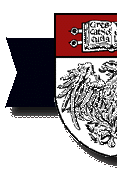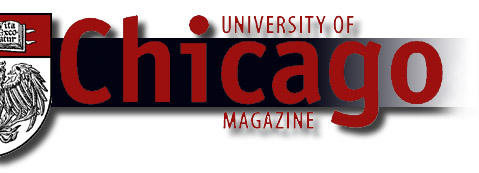 |

Junk
genes
An ancient
Chinese legend tells the story of the daughter of the country’s
first emperor: After drowning in the East China Sea, Jingwei was
reincarnated as a beautiful bird who flew about dropping stones
and wood to fill in the sea, hoping to save others from a similar
fate.
Today, Jingwei
has been reborn again, this time as a fruit-fly gene discovered
by Manyuan Long, assistant professor in ecology & evolution: “We
used the name jingwei because this gene avoided the usual fate of
the processed [useless] gene—death—and was ‘reincarnated’ into a
new structure with a novel function.”
Long’s discovery
of jingwei in 1993, when he was a doctoral student at the University
of California, Davis—along with his other contributions to genetics—led
to his selection this fall as one of 24 David and Lucile Packard
fellows in science and engineering. The national fellowships provide
$625,000 over five years to help support young researchers’ work
in chemistry, biology, physics, mathematics, astronomy, and computer
science.
Focusing on
how human genes evolve, Long uses molecular techniques and computer
software to search for new genes and to compare and contrast thousands
of genes at a time. He is particularly intrigued by the creation
of new genes through the naturally occurring shuffling and mixing
of gene fragments. As he explains, so-called junk DNA, or introns—stretches
of genetic material that appear to have no real function—actually
allow gene fragments to recombine and create new genes without overlapping.
Long plans to use the grant to learn more about jingwei’s function
and its creation through gene shuffling.
He also wants
to prove the so-called “introns-early” theory. Proposed by Walter
Gilbert, Long’s postdoctoral adviser at Harvard, the theory suggests
that introns existed two billion years ago, before bacteria diverged
from plant and animal cells. Because bacteria do not contain introns,
some evolutionary biologists believe introns developed after the
divergence of these early life forms—the “introns-late” theory.
Long maintains that bacteria once had introns but lost them to facilitate
faster replication. Smaller organisms, like bacteria, he says, need
to replicate quickly to respond to environmental stresses, while
larger organisms, which rely less on rapid replication to survive
changes in the environment, can accumulate more introns over time.
If bacterial cells, which replicate as fast as once every 30 minutes,
had to copy long stretches of useless DNA every time they divided,
he notes, their growth rate could be nowhere near as rapid.
In a related
study, Long is looking at whether organisms with larger genomes
have more of their genetic material devoted to introns.—Sharon Parmet
|



